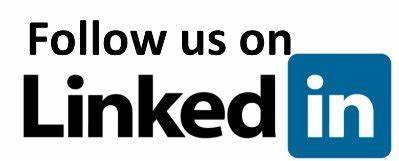
February 21, 2025
How to Deploy OEM Incentives in 2025
Author: Steven Bottieri
Vice President, OEM & EEQ – automotiveMastermind.
Manufacturer incentives provide dealers with tools to boost sales volumes and improve their bottom line. As we shift into a buyer’s market, understanding the fine details of OEM incentives will bring dealerships more profitability with each transaction.
OEM incentives can include many financial programs and money-saving deals designed to boost dealership sales and clear inventory. To attract both new and repeat customers, these incentives often include financial incentives to lower lease payments, special financing rates, loyalty programs, private offers, cash rebates, dealer cash and trade-in bonuses.
By understanding the various types of incentives available, dealers can optimize their sales strategy to improve customer experience and profitability.
The Importance of OEM Incentives
Customers place a heavy weight on the availability of OEM incentives in the vehicle purchase process. Manufacturer rebates are typically used by dealers in their marketing campaigns to spark interest and mitigate monthly payments.
These incentives can motivate buyers to consider vehicles they previously might not have, especially when competitive cash-back offers or special financing rates make premium models more accessible. By understanding each buyer’s unique needs and preferences, dealers can match them with the right vehicle while crafting a personalized offer that maximizes available incentives.
Special financing rates, loyalty rewards and service protection packages help make ownership more affordable while demonstrating the manufacturer’s commitment to the customer. By strategically leveraging these incentives, dealers can maintain their competitive edge while building lasting relationships that fuel repeat purchases.
Key Trends in OEM Incentives in 2024
As inventory has grown, so have OEM incentives. According to NADA data, new light-vehicle inventory was up 21% year-over-year in December 2024, and incentives increased by $809 compared to the previous year.
The automotive industry is also going through significant changes in the way OEM incentives are handled. These developments are reshaping how deals are structured.
Focus on Electric Vehicles (EVs) and Sustainability
To prevent EVs from accumulating on dealer lots, OEMs are rolling out a variety of incentives to promote electric and hybrid vehicles. These efforts aim to lower financing rates for eco-friendly models, in turn making sustainable vehicles more accessible and appealing to a broader audience.
Digitalization of Incentive Programs
The push for more digital tools has streamlined the administration of incentive programs, making them more efficient – and accessible. Manufacturers can now customize incentives based on market demands and consumer preferences, making it easier for dealerships and customers to understand.
Personalized Incentives
OEMs can utilize analytics and consumer insights to create incentives that connect with each customer on a personal level. For example, Enterprise EyeQ integrates with Mastermind to analyze customer data and deploy private incentive campaigns directly to customers across dealer networks. This data-driven approach to personalized incentives is transforming the car-buying journey by boosting customer engagement, improving conversion rates and building brand loyalty.
With Mastermind and Enterprise EyeQ, dealers gain a substantial loyalty lift, with 7 out of 10 customers continuing to work with their current dealership.
The Rise of Captive Financing Options
With rising inventory, OEM captive financing options have become increasingly popular as an incentive tool.
These in-house financing options are tailored to support the sale of vehicles by offering competitive rates and terms that traditional lenders might not match. By providing these specialized financing solutions, OEMs can make purchasing a new vehicle or upgraded model more accessible while gaining a competitive edge.
Maximizing the Benefits of OEM Incentives in 2025
Dealerships can deploy a strategic approach to fully capitalize on OEM incentives in 2025 and beyond. To deploy a well-planned incentive strategy, follow these helpful suggestions:
1. Stay Informed
OEM incentives require consistent attention from dealerships. Teams who regularly monitor manufacturer communications, participate in training sessions and utilize industry resources can better leverage available programs.
2. Integrate Incentives into Sales Strategy
Incorporating OEM incentives into dealerships’ sales and marketing strategies can significantly change the way offers are presented to potential customers – and impact customer experience. By highlighting these offers in marketing and customer communications, dealers can increase their appeal and conversion rates while drawing more prospects to the showroom.
3. Educate Your Sales Team
A well-informed sales team is the backbone of an effective incentive program. Sales personnel can confidently promote these offers through regular training, improving the buying experience and overall customer satisfaction.
4. Track Your Performance
The true value of utilizing OEM incentives lies in the ability to assess their impact on sales and customer engagement. Dealerships gain insights into the effectiveness of their strategies by monitoring the automotive sales data, allowing them to tailor their approaches and maximize the advantages of special incentive programs.
Want to learn how Mastermind can help you navigate and leverage OEM incentives for your dealership’s success in 2025 and beyond? Contact us for a free demo.


